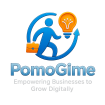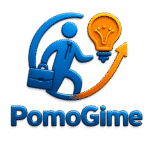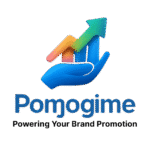WHAT YOU NEED TO KNOW
Frequently Asked Questions
SEO (Search Engine Optimization) is the process of improving your website’s visibility on
Google and other search engines. It helps your business attract more organic traffic, reach local
customers in your city/region, and increase sales without paid ads.
SEO is a long-term process. Most businesses start seeing improvements in 3–6 months,
depending on competition, content quality, and backlinks. With consistent SEO, results are
long-lasting and keep improving over time.
On-page SEO includes optimizing your website’s content, structure, meta tags, and internal
linking. Off-page SEO focuses on building backlinks, online authority, and brand mentions.
We track keyword rankings, organic traffic, leads/sales, and conversions. Monthly reports and
analytics tools show whether your SEO campaign is helping your business grow locally and
globally.
On-page SEO covers keyword research, content optimization, meta titles, meta descriptions,
headers, internal links, image alt text, and site speed. These factors help search engines
understand your website better.
Meta titles and descriptions are the first things users see in search results. Well-optimized meta
tags improve click-through rates and help Google rank your page for the right keywords.
Off-page SEO builds your website’s authority using backlinks, citations, and brand mentions. It
tells Google that other websites trust your content, which improves rankings and online reputation.
High-quality backlinks from trusted websites act like votes of confidence for your site. The more
relevant backlinks you have, the higher your chances of ranking on Google.
Local SEO helps your business appear in Google Maps and local searches like 'digital marketing
services near me.' It drives nearby customers to your store or office and boosts walk-in traffic.
To rank on Google Maps, your business needs a verified Google Business Profile, consistent
NAP (Name, Address, Phone), local citations, reviews, and optimized location-based content.
Local SEO targets your city or region, while GEO SEO targets multiple locations or countries.
For example, GEO SEO helps businesses expand visibility across India or globally with
location-specific content.
AEO ensures your content answers specific questions directly, so search engines like Google,
Siri, and Alexa can use your answers in featured snippets and voice results.
By writing short, clear, and structured answers to common questions, your content becomes
eligible for Google’s 'People Also Ask' and featured snippet boxes.
Optimizing video titles, descriptions, tags, thumbnails, and adding subtitles improves visibility.
Engaging content and watch time are the most important ranking factors.
Yes. Tags, descriptions, and keywords help YouTube understand your video’s topic, making it
easier to rank for relevant searches.
Backlinks are links from other websites pointing to your site. They show Google that your
website is trustworthy. Quality backlinks increase your authority and rankings.
Domain Rating is a score (0–100) that shows your website’s backlink strength. A higher DR
usually means better chances of ranking on search engines.
SMO (Social Media Optimization) means optimizing your profiles and posts, while SMM (Social
Media Marketing) means running paid ads and campaigns. Together, they improve brand visibility
and customer engagement.
It depends on your audience. For B2B, LinkedIn works best. For B2C, Instagram, Facebook, and
YouTube perform well.
PPC (Pay-Per-Click) is paid advertising where you only pay when someone clicks your ad. It
gives instant traffic, leads, and sales compared to SEO, which takes longer.
Google Ads target people searching for your service, while Facebook Ads target people based
on interests and behavior. Both are effective depending on your goals.
ORM is the practice of monitoring and improving how your brand appears online. It includes
handling reviews, mentions, and search results to maintain a positive reputation.
In most cases, reviews cannot be deleted unless they violate platform policies. But ORM helps
push negative content down and highlight positive feedback.
It depends on the severity of the issue. Small issues can be improved within weeks, while bigger
problems may take 3–6 months with consistent ORM efforts.



